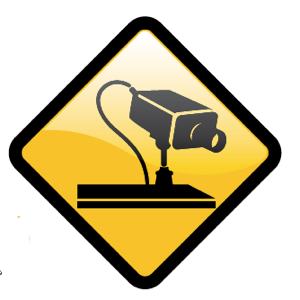
Caddo Cameras
Louisiana school system upgrades to megapixel surveillance system
- By Wendi Burke
- Dec 01, 2013
 In northwest Louisiana, with a total population of approximately 260,000
people, Shreveport is the parish seat for Caddo. Its school system, Caddo
Parish Public Schools, is comprised of 70 elementary, middle, high and special
function schools.
In northwest Louisiana, with a total population of approximately 260,000
people, Shreveport is the parish seat for Caddo. Its school system, Caddo
Parish Public Schools, is comprised of 70 elementary, middle, high and special
function schools.
The schools have made a major commitment to implementing IP video
surveillance throughout the entire district, an ongoing project being managed and
installed by Stanley Security Solutions.
School Consolidation Motivates Higher-level Surveillance
Prior to upgrading to IP megapixel surveillance, Caddo schools employed a range
of surveillance technologies from different makers that varied from campus to campus.
Steve White, director of construction and capital projects for Caddo Schools,
noted that they suffered from storage limitations with old DVR technology.
“We would view something on a Friday, and come Monday, when we decided
we wanted to see it again, the event had already been over-written,” White said.
The move to unify and upgrade all surveillance technologies started in the summer
of 2011 and was given a firm push by the need to consolidate a number of the
parish’s schools.
“We had some under-used high schools, so we closed some middle schools and
combined the students, putting grades seven through twelve together to get our
building use rates up to where we needed them to be,” White said. “This new situation
presented us with some challenges, because now we had much younger students
in the same building with juniors and seniors.”
To remedy potential issues, the school district set up separate entrances for middle
and high school students with sections of each school building designated only
for middle and high school students. During the consolidation, district officials put
out a bid to bring in new video surveillance technology that would enable them to
keep a close eye on things in the five new combined middle and high schools.
Major Investment in Megapixel
Around this time, federal stimulus monies became available, and Caddo decided
that a large portion of those funds should be used to upgrade video surveillance in
all the parish’s schools, not just at the newly-combined schools.
“In the five original schools, we initially installed a major name brand camera,”
White said. “After a while, we realized these cameras were expensive, and we
should be able to do better at that level of investment.”
For the new expansion phase, Caddo selected IQinVision HD megapixel cameras
for roll-out to all 69 school campuses and the main administration campus in
the summer 2012.
“These new HD megapixel cameras were a big step forward for us,” White said.
The number of megapixel cameras deployed in the elementary schools is the
smallest, running about 100 cameras. Middle schools require approximately 150-
200 cameras, and high schools often deploy 300 or more.
Caddo Parish has installed around 4,000 cameras to date, and approximately
7,000 total HD megapixel cameras will be deployed once the project is completed.
Dome, durable, outdoor models were selected with camera resolutions ranging
from 1-MP up to 5-MP, depending upon the area of coverage and desired image
quality goals. White estimates that 80 percent of the cameras will be installed
inside the many school buildings with the remaining 20 percent outside to watch
grounds, parking lots and other facilities.
System Deployment
The Caddo Parish Schools security department, along with each school’s resource officer,
monitors video and performs post-event investigations. Each campus has access
only to its own camera views. Both White’s and Murray’s departments and the Caddo
Parish superintendent have access to all camera views, which are managed by video
management software. White’s department is in charge of system installation and network monitoring to ensure that everything
remains in good working order.
The new, upgraded IP video system is
meeting Caddo’s needs in terms of image
quality and coverage, and it’s a breath of
fresh air from their old technology.
“I can’t tell you the number of times
we had failures with the prior system,”
White said.
Murray reports that cameras are deployed
to monitor all common areas,
hallways, cafeterias and auditoriums
“where students congregate, entrances
and exits, too; but we do not monitor in
the classrooms,” he said.
Cameras have become an important
force multiplier.
“We use the cameras to keep an eye
out where we don’t have staff, checking
if students are leaving campus from
where they aren’t supposed to and
monitoring gates for unwanted visitors,”
White said.
Staff members also monitor burglar
alarms after hours to guard against
trespassing.
New Surveillance
Capability Paying Off
Both White and Roy Murray, director
of security, report that a number of
criminal and non-criminal incidents
are regularly investigated and solved
using their new IP video surveillance
capability. For items that are taken or
misplaced around the schools, the vast
majority are successfully retrieved because
security staff now have the image
quality needed to make positive IDs on
those involved in such incidents.
“The video tells the whole, unbiased
truth,” Murray said. “We no longer
have to deal with ‘he said, she said.’ We
know what actually happened in the incidents
we are investigating. Our cameras
represent an unbiased third party.”
The security department reviews
video to investigate missing property,
vandalism and altercations. Video is
used to evaluate if certain instances actually
happened when reported, and in
instances where a student might accuse
a teacher or staff member of an improper
action, the video can also serve
to exonerate.
“Of course, we use our video surveillance
capabilities for security,” Murray
said, “but our risk management folks
use it to check the validity of slip and
fall claims. Our principals use it to aid
them in managing discipline. We use the
system for a whole range of purposes.”
Once the current phase of implementation
is completed and all Caddo
Parish’s schools have been covered,
Murray and White intend to return to
where it all started—the five original
schools—to retrofit them with HD
megapixel cameras and to unify those
schools into what will be a very impressive,
connected network of cameras,
stretching from one end of the parish
school district all the way to the other,
with 69 school campuses
in between.
This article originally appeared in the December 2013 issue of Security Today.